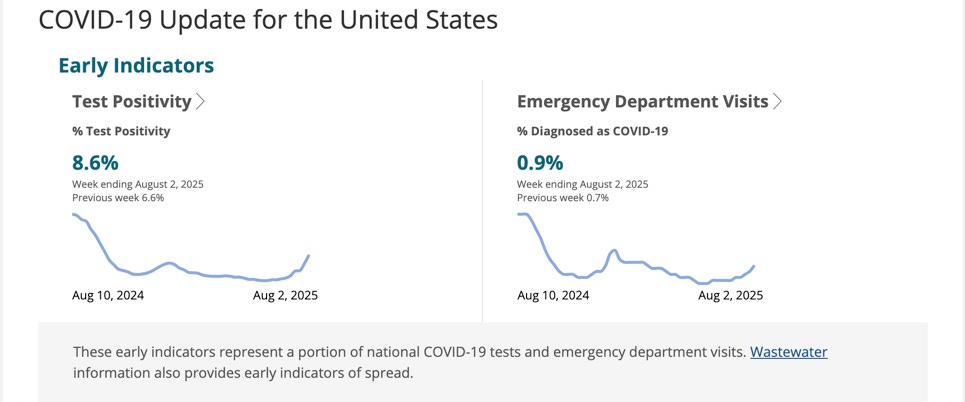The majority of scientific literature publication is now concentrated in the hands of five for-profit companies. Until the early 2000’s these journals utilized a subscription model of payment until revenues declined because libraries, academic institutions, and individuals pulled back from subscription spending. Many journals then changed to various open access (OA) models, without standing subscriptions, but with some of their content still behind a paywall. In any other branch of the publishing industry, the company pays the content creators for their submissions—the wares that the publisher is hawking, and without which there would be no market. But if you are not in the academic game you might be surprised to know that these journals charge scientists article processing fees (APC) for the honor of publishing their results, and we are not talking chicken-feed. The various payment models are complicated, and some publishers have been roundly criticized for double dipping, charging the authors to publish and then charging again for access. An analysis from MIT looking at the big five publishers from 2016-2018 found the following profits garnered from academics looking to publish. (Ignore the various complicated publishing model designations, and look at the revenue)
We estimate that globally authors paid $1.06 billion in publication fees to these publishers from 2016–2018. Revenue from gold OA amounted to $612.5 million, and $448.3 million was obtained for publishing OA in hybrid journals. Among the five publishers, Springer Nature made the most revenue from OA ($589.7 million), followed by Elsevier ($221.4 million), Wiley ($114.3 million), Taylor & Francis ($76.8 million), and Sage ($31.6 million).
The number of scientific journals grew dramatically in the last 50 years; and the trend has markedly accelerated since 2000, with hundreds of new “peer reviewed” journals appearing every year, and an estimate that there were over 40,000 journals around the world in 2020. Giving it just a little thought from a business point of view—if your profits were beginning to sink 20 years ago when there were already 30,000 journals (too many for the customer subscription base to support), and now you make money from charging most scientists who want to publish, you would create as many journals as possible, and crank out as many articles per year as possible. I leave it to my readers to conclude what is most likely to happen to the quality, importance, and reproducibility of the “scientific facts” published under such a paradigm.
But what about the peer review process, shouldn’t that guarantee that only quality science is published? Peer reviewers are almost always uncompensated for their work, and that work has increased massively. Has the job of peer reviewing been farmed out lower down the food chain of qualified individuals? I don’t know that to be true, but I do know that they are chosen by the giant publishing houses which profit from maximizing the number of articles printed--so it wouldn’t be a stretch of the imagination to think that a peer reviewer rejecting too many articles might not get invited to next year’s company picnic. Since the reviewers are doing this primarily out of the goodness of their hearts, would they be likely to raise alarms if they were “fired”? Certainly there are some interesting questions here.
Published studies do sometimes get retracted, and there has been an increase over the last decade. Retractions can be triggered by the discovery of fraudulent manipulation of results, or by other experts in the field calling out errors in the experimental process, which had been missed by the peer reviewers, after the paper was published. Setting the record straight can sometimes take years. Take for example the recent retraction of a highly influential 2010 paper published in Science. The authors claimed that they had discovered a rare bacteria which utilized arsenic instead of phosphorus in critical cellular molecules including DNA. This was a profound discovery, which the government funder NASA suggested would re-write basic biology. But other vigilant experts in the field immediately began to point out problems with the experimental methodology. Now 15 years later, the prestigious journal Science has retracted the paper; stating that they, “…believe the study to be fundamentally flawed…and that a number of factors led to the publication of this paper with seriously flawed content, including the peer review process and editorial decisions that we made.” Better late than never. Honest mistakes in experimental design or disagreements over the interpretation of accurately recorded data are one thing, but overt fraud unfortunately occurs as well. In recent years some very high profile scientists in the biomedical field have been accused of fraudulent manipulation of data, with severe career consequences. In February of 2024, Khalid Shah, a Harvard neuroscientist-immunologist, was accused of 59 instances of fraudulent data manipulation involving the reuse of photomicrographs in multiple papers, and use of other laboratory’s previously published photos to represent results of his own studies. Harvard is apparently still investigating a year later, at least there hasn’t been any public announcement of their findings (maybe Harvard has more pressing issues than academic integrity right now). In recent years a number of other scientists have been caught in the same fraudulent manipulation of photographic images, through the use of AI programs, which can evaluate millions of images published in myriad journals and detect exact duplicates. No human could possibly accomplish this, and one has to wonder how many times in the past this sort of cheating went undiscovered.
Over the last 40 years the ratio of research science and engineering doctorate degrees compared to the non-science fields had steadily widened, and according to the National Science Foundation there has been a eight-fold increase in yearly science doctorates awarded since 1958, with a more recent doubling between 1985 and 2021. There is a ready pool of young (and not so young) scientists looking to pay-to-publish in some very predatory journals—Caveat Emptor.
The summer COVID wave is showing belated signs of traction with upticks in both test positivity and a slight increase in ER visits. The new boosters were targeted against LP.8.1, the dominant variant in May when a choice had to be made for the manufacturing timeline. As has been the case each year of the Pandemic, the virus has moved on since the vaccine target was chosen, and the current rapidly increasing variants NB.1.8.1 and XFG are now taking over. The good news for those needing vaccination is that these are all variants from the same lineage as the chosen vaccine strain, and the shots should be just as effective in preventing serious disease in the at risk population as in prior years.
Tetanus and diphtheria are among the most highly successful vaccines of all time. They are frequently referred to as legacy vaccines, having been developed in the 1920’s using older technology based on the protein toxins of the organisms. The CDC currently, and for many years, has recommended that adults get booster doses every ten years. Is there sound scientific evidence to support that recommendation, or is it simply one of those legacy decisions carried forward in perpetuity, and never evaluated critically? The ten year booster recommendation is not in keeping with the WHO guidelines, or many of the highly developed Western European nations. The UK for instance doesn’t recommend any adult boosters after completion of the primary childhood series and boosters. A review article, notated below, from Clin Microbiol Rev. discusses a great deal of data suggesting this 10 year booster cycle in the US is not supported by scientific evidence. The incidence of tetanus in the US is less than 1 case per 10 million person-years, and diphtheria is less than 1 case per billion person- years. Also there is data showing that protective antibody levels are incredibly stable over time, and the combined vaccine provides over 30 years of protection following the initial series of six doses in childhood. The review also highlights a natural experiment since France has recommended every 10 year adult boosters like the US, while across the Channel, the UK has not given any routine adult boosters since the 1950’s. The countries are comparable in population size (60 million) and age, as well as childhood vaccination rates and socio-economics. Over many recent years France had no advantage over the UK in numbers of tetanus or diphtheria cases, with the UK actually slightly, but not significantly, lower. The researchers also point out that the UK herd immunity was sufficient in 2022 to prevent secondary cases when a surge in imported diphtheria cases (73) occurred among asylum seeking immigrants. That number of cases was equal to the total seen in the UK over the prior 20 years. None of this works of course if children don’t get their primary vaccination series, but you can trust me that anyone who is not vaccinated for these diseases in childhood will not be benefited by an adult booster vaccination regimen which makes zero sense. (Such a person would need a full primary vaccine series). In addition to the confidence eroding feature of an illogical booster regimen, these researchers estimate annual US health care savings of $1 billion by doing away with the current recommendation. Vaccines are one of the marvels of modern medicine, in aggregate saving hundreds of millions of lives—but like any treatment they can be used inappropriately. Every medical therapeutic ever invented, from bleeding, to fever therapies or mercury for syphilis, and modern antibiotics has side effects. We need to be very careful with vaccines that we don’t let our enthusiasm lead to unnecessary over dosing; or insisting that a vaccine which does not prevent infection or transmission, but only lowers the risk of severe disease, be given to a segment of the healthy population which essentially never develops severe disease.
Lessons learned from successful implementation of tetanus and diphtheria vaccination programs 2025 Jul 15:e0003125.
doi: 10.1128/cmr.00031-25.Online ahead of print
Now for some quick nuggets from recent reading, feel free to explore on your own.
Monkeypox (Jynneous) vaccine prior to exposure has been shown to reduce the severity of disease, both in patients with and without HIV infection. This repurposed smallpox vaccine isn’t great at preventing infection, but works well to attenuate the disease course.
The FDA is looking to secure a schedule 1 status for a drug which has been widely circulating with very high addiction potential, but is currently completely unregulated. 7-hydroxymitragynine is a synthetic drug derived from kratom leaves. Kratom if you are not familiar is a South Asian plant which has several psychoactive alkaloids and is widely smoked or ingested. The compound in question is found in trace amounts in natural kratom, but is now being synthesized and available in concentrated forms at you local gas station or vape shop. Advertised as “legal morphine”, a mood enhancer or a consciousness expander, 7-OH is a high potency opioid, binding to the same receptors in the brain as morphine or fentanyl. How this has been allowed to go on for several years when we were all attuned to the opioid epidemic is very unfortunate.
Predicting patients at increased risk of dying by the utilization of low tech physical examination methods has been validated for example by the simple ability to rise unassisted from a chair. Now some cardiologists have correlated more accurate predictions of survival with results of a test where the patient is asked to arise from sitting on the floor without using their arms or any other support. Patients are scored into four groups based on how many acts of assistance they need, and also a score for balance. The differences between the lowest scoring groups and the highest are remarkable. Based on my having trained in an era when a premium was placed on actual hands on examination of the patient (instead of ordering an MRI, nuclear medicine study, or CAT scan), this sort of low tech information gathering certainly appeals.
Sitting–rising test scores predict natural and cardiovascular causes of deaths in middle-aged and older men and women | European Journal of Preventive Cardiology | Oxford Academic
https://academic.oup.com/eurjpc/advance-article/doi/10.1093/eurjpc/zwaf325/8163161
The NIH has cancelled several hundreds of millions of dollars for mRNA vaccine research. The most significant advantage of RNA based vaccines of course is the speed with which they can be designed and mass produced compared to more traditional vaccine technology. Abandoning RNA vaccine research isn’t a good idea, particularly given our history of pandemics over the last few decades. The next time I have coffee with Bobby Kennedy, I intend to first flatter him for removing red dye #3, a known carcinogen in our food for a century, and all the other petroleum based dyes which will be disappearing soon. That, as well as a whole raft of noxious, untested chemicals which he might use his proven leverage over the food industry to banish. After said flattery, I’ll point out how he could have been remembered as a real hero, but instead just might be recalled as the numbskull who deprived us of a rapidly available vaccine for Avian Influenza (or some other unanticipated pathogen), causing a delay costing many hundreds of thousands of deaths. I would opt for going down in history with the guaranteed historic achievement in the food department, rather than rolling the dice to placate the unscientific hordes of RNA skeptics—but then I try hard not to be a numbskull most of the time.
This is the 130th edition of “Clear and Present Thinking”, and I want to thank everyone who at least occasionally reads it. As the immediacy of the COVID Pandemic faded, I have been making less frequent posts, and addressing a wider variety of topics. If you continue to find the content valuable feel free to chime in with a comment or hit the like button. Should you run into RFK Jr. at an AA or NA meeting before our next coffee-klatsch, please share my thoughts about the importance of his legacy. One last request from me today. After learning that Nancy Pelosi’s 400 million dollar fortune was built through incredible financial acumen, with a 70% return in 2024, beating every hedge-fund in the world and more than doubling Warren Buffet’s results (ok he’s getting old), I have been peppering her with requests to start managing my own slightly smaller portfolio. If any of you have influence with Nancy, and can intercede on my behalf, it would be much appreciated.




Enjoy your posts and appreciate your taking the time. Regarding Nancy Pelosi, it is an ongoing outrage that we can't stop congress from enriching themselves through insider information and I suspect that she has done so like many others. That said, when I looked that up it seems that information and number came from Karoline Leavitt which immediately casts the information into serious doubt.